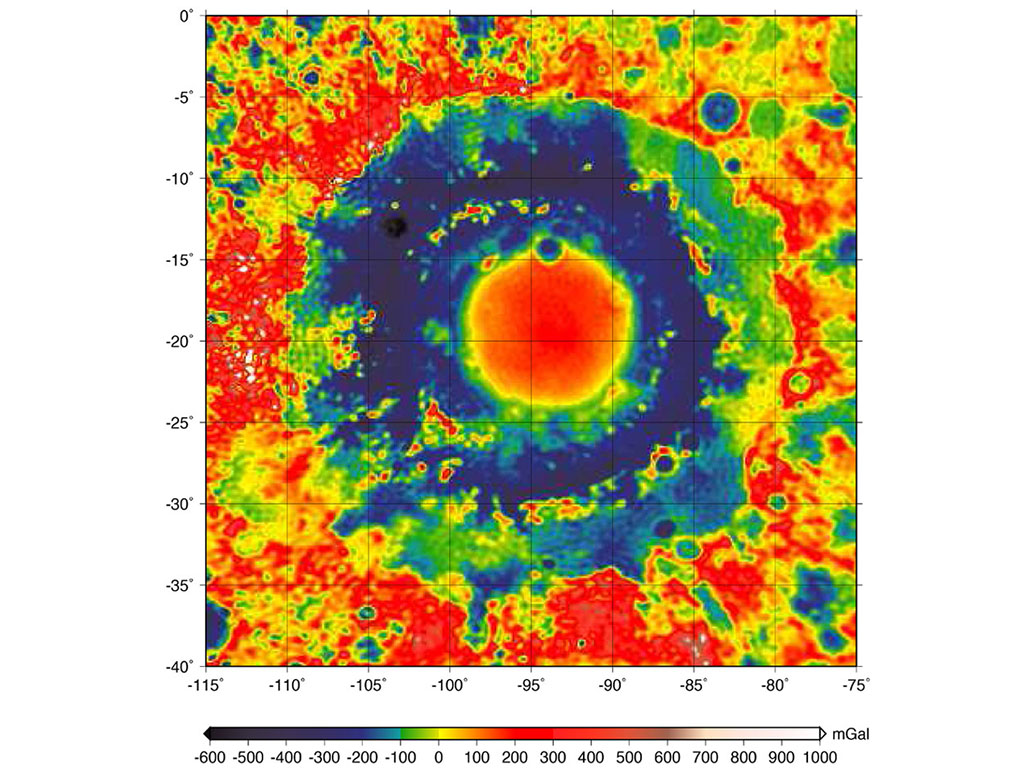This color-coded map shows the strength of surface gravity around Orientale basin on the moon, derived from GRAIL data. (The color scale represents units of “gals” — 1 gal is about 1/1000 of Earth’s surface gravitational acceleration.) (NASA/JPL-Caltech)
Home This color-coded map shows the strength of surface gravity around Orientale basin on the moon, derived from GRAIL data. (The color scale represents units of “gals” — 1 gal is about 1/1000 of Earth’s surface gravitational acceleration.) (NASA/JPL-Caltech) This color-coded map shows the strength of surface gravity around Orientale basin on the moon, derived from GRAIL data. (The color scale represents units of "gals" -- 1 gal is about 1/1000 of Earth's surface gravitational acceleration.) (NASA/JPL-Caltech)



